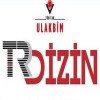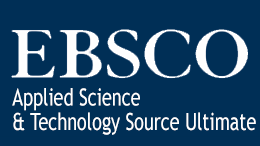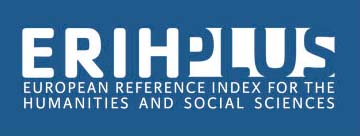Yazım Kuralları
Article preparation
• For each article, the form "Copyright transfer Form" must be uploaded to the system at the time of submission as signed by all authors.
• All abbreviations in the main text must be given in the place where they are used for the first time, followed by the abbreviation in brackets after the description. Product information including product name, manufacturer, city and country information should be given in parentheses in the main text.
• Statistical analysis should be performed according to the rules for reporting statistical data in medical journals (Altman DG, Gore SM, Gardner MJ, Pocock SJ, Statistical guidelines for contributors to medical journals, Br Med J 1983: 7, 1489-93). The information about statistical analysis should be written in the Material-Methods section and the used software must be definite. Units are prepared in accordance with the International System of Units (SI), the international unit system.
Title page click
A separate "Title Page" file must be sent with all submitted articles. This page should include;
• English title of the paper (It should be short, clear and adequately reflective of the content of the manuscript, initials should be written in capital letters and bold in Times New Roman 14 pt.)• Authors' names, institutions, ORCID numbers, e-mail addresses, country (Clicking on the OR icon should add the hyperlink to the person's ORCID site, when clicking on the person's NAME-SURNAME, a hyperlink to the mail address should be added)
• The name, phone number and e-mail address of the Corresponding author,
• For the studies presented in the scientific congresses, the full name of the congress, the date and place where it was made
Main Text file click
The content of the text file is summarized below and should begin on a new page using the page-end function in the Word:
• English title of the article,
• English abstract
• English key words
• Introduction,
• Materials and Methods,
• Results,
• Discussion,
• Acknowledgement (optional),
• Disclosure Statement,
• Author contributions,
• Conflict of Interest,
• References,
Abstract
• All articles except “Letter to Editor” and “Editorial Comment” should have English abstract as "Abstract" of no more than 250 words.
• Abstracts of “Original Research” articles should be prepared to include subheadings of Objective, Material-Method, Results and Conclusion.
• For “Review” and “Case Report”, non-structured abstract is accepted. An abstract for "Case Report" should include introduction of case presentation with scientific background, presentation of the case and conclusion parts.
• The abbreviation should not be used as much as possible within the abstract. The system should also be loaded again, with the title of the article at the top of the first page of the text file being uploaded.
Keywords
• All articles must be sent with at least 3 and at most 6 key words, and the keywords should be written as "Key words" just below English abstract. Abbreviations should not be used as keywords. The keywords should be selected from the Medical Subject Headings (MeSH) prepared by the National Library of Medicine (NLM) and TR Index Keyword List or the Turkish Science Terms (www.bilgiterimleri.com) databases. As the keywords loaded to the online manuscript system, they should be written along with abstract on the first page of the text file.
Citation and sources:
• References should be given in Times New Roman 10 font size at the end of the article . In the article, JAMA(or AMA) style in-text citation method should be used.
• It is recommended not to exceed 30 for research articles, 50 for review articles, 20 for case reports, and 10 for letters to the editor. References should be written in the order in which they appear in the article and should be cited in the text or at the end of a sentence as a superscript immediately after the punctuation mark. The author(s) is responsible for the accuracy of the references.
Book/Chapter from a book:
1. Gilman S, Newman SW. Manter and Gatz's Essentials of Clinical Neuroanatomy and Neurophysiology. 10th ed. F.A. Davis; 2003.
2. Cohen M. Chronic and acute. In: Sapphire P, ed. The Disenfranchised. Baywood Publishing; 2013:109-122.
Article:
3. Hamilton GS, Naughton MT. Impact of obstructive sleep apnoea on diabetes and cardiovascular disease. Med J Aust. 2013;199(8):S27-30.
4. Johnson CL, Dohrmann SM, Kerckove VD, et al. National Health and Nutrition Examination Survey: National Youth Fitness Survey estimation procedures, 2012. Vital Health Stat 2. 2014;(168):1-25.
Electronic sources (e-book/online journals):
5. Thomas JL. Helpful or harmful? Potential effects of exercise on select inflammatory conditions. Phys Sportsmed. 2013;41(4):93-100. Accessed November 22, 2013. https://physsportsmed.org/psm.2013.11.2040
6. Surana NK, Kasper DL. Approach to the Patient with an Infectious Disease. In: Jameson J, Fauci AS, Kasper DL, Hauser SL, Longo DL, Loscalzo J. eds. Harrison's Principles of Internal Medicine. 20th ed. McGraw-Hill;2018:Chapter 115. Accessed October 15, 2020.https://accessmedicine.mhmedical.com/content.aspx?bookid=2129§ionid=192019106
Note: The author is responsible for the WRONG REFERENCE information.
Article text properties by article type
• Original research: The main text should include "Introduction", "Materials and Methods", "Results" and "Discussion" sections. The limitations, barriers and inadequacies of the original research must be mentioned before the conclusion paragraph in the Discussion section. The final paragraph of the discussion section should be designed as the final part of the article.
• Review: Written reviews prepared by experts who have accumulated knowledge of the writing and whose accumulation is reflected in the number of international publications and citations. Authors can also be invited by the journal. In order to be valid for the compilations uploaded to the system as of 2022; at least one of its authors must have the title of professor. It should be prepared in a format that explains, discusses, evaluates, and carries out future work for the final level of knowledge or the use of the subject for clinical use. There are no defined subheading sections, but sections of the article should be specified by the author
• Case Report: Main text: "Introduction", "Case Presentation" and "Discussion" subheadings.
• Editorial Comment: The purpose of the briefing is to be interpreted by a writer who is a specialist in that research. Authors are selected and invited by the journal. Uninvited editorial comments are not accepted.
• Letter to Editor: Papers may be sent as a letter of editor to discuss the importance of a previously published article, an elaborate detail or missing parts. The number one reference of the article should belong to the posting of the letter written and should be included in the text. Abstract, keywords, tables, figures, images and other images are not used. The main text should be sub-titled. The maximum number of references should be more than ten.
Limitations for each manuscript type
| Type of manuscript | Word limit | Abstract word limit | Reference limit | Table limit | Figure limit |
| Research Article | 4000 | 250 | 30 | 5 | 5 |
| Review Article | 5000 | 250 | 50 | 5 | 5 |
| Case Report | 1200 | 200 | 20 | No tables | 5 |
| Editorial Comment, Letter to the Editor | 400 | No abstract | 10 | No tables | No media |
*Word limit should not include the abstract, references, tables, and figure legends.
• The acceptable percentage of similarity is below 20%. Submitted manuscripts must not have been previously published or be under consideration for publication elsewhere. No part of the accepted manuscript should be duplicated in any other scientific journal without the permission of the Editorial Board. Submitted manuscripts are screened for possible plagiarism or duplicate publication by Similarity Check upon arrival. If plagiarism or duplicate publication is detected, the manuscripts will be rejected.
IJTCMR
International Journal of Traditional and Complementary Medicine Research




